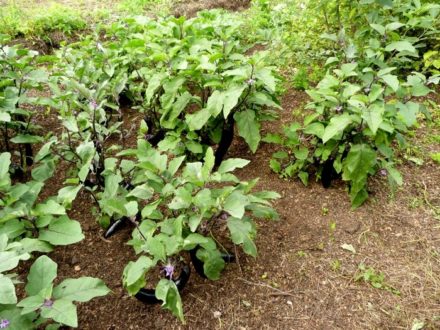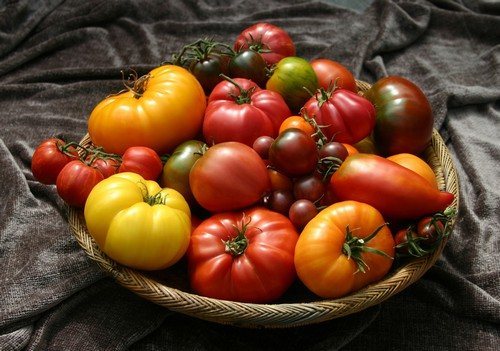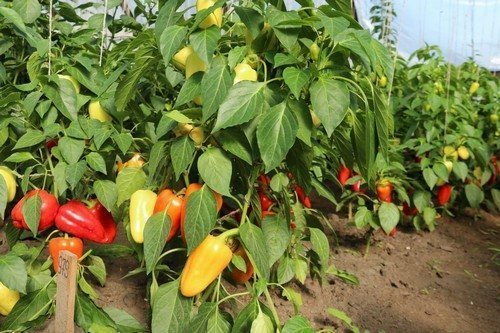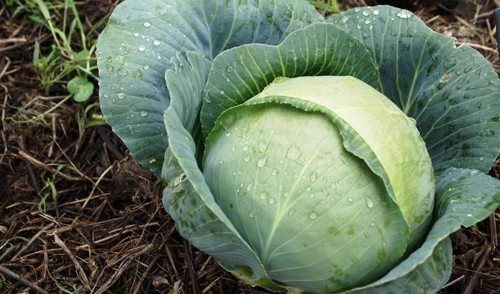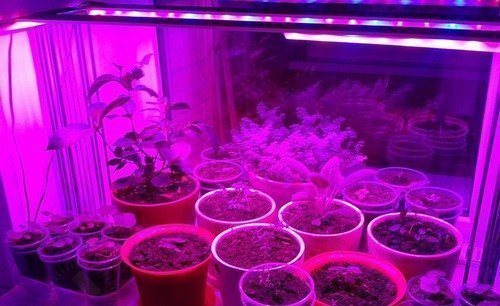Every year, several dozen varieties of eggplant are bred and officially registered (entered into State Registers) around the world. Below we'll talk about just eight - but growing each one could be the highlight of the 2020 gardening season. And it’s important to emphasize right away that the days of waiting until eggplants ripen are counted from the emergence of shoots.
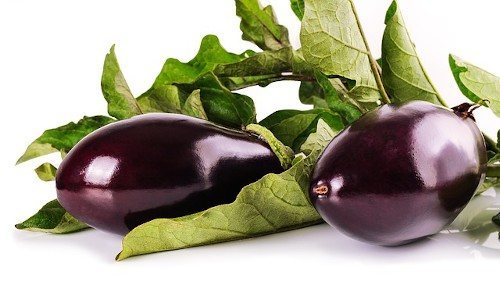
Varieties for the greenhouse
All presented varieties can also be grown in open ground, however, only in greenhouse conditions they bring maximum yield and are least demanding of care.
Farama F1
It is liked by those who don’t want to wait long for fresh vegetables - eggplants are ready for harvesting in 70-80 days. When forming 1-2 stems recommended for greenhouse conditions, the bushes stretch up to 80-90 cm in height. From 1 sq. m remove 7-9 kg of eggplant. Each vegetable has a cylindrical shape, a length of 20-23 cm and a weight of 155-200 g. In the refrigerator, eggplants are stored fresh for up to 6 weeks; they are equally appetizing fresh in dishes and in the form of canned food.
The botanical nuances of the origin of the hybrid endowed the Farama F1 variety with the following agricultural technology features:
- the duration of daylight hours for seedlings should be at least 13 hours;
- seedlings transferred to the greenhouse must be at least 20 cm tall and have 5-7 true leaves;
- During the first 3 weeks after planting, nitrogen fertilizers should not be applied to the greenhouse.
The variety is practically invulnerable to verticillium wilt and spider mites.
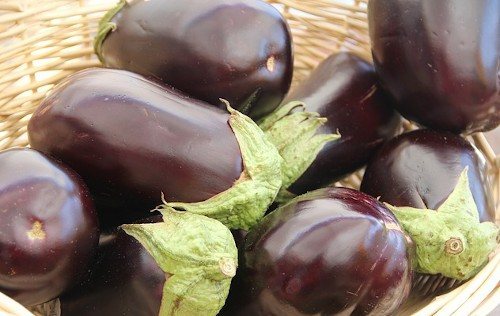
Bagheera F1
One of the most heat-loving varieties - the air temperature is maintained at least +26°C (maximum +33°C). Growing on black soil or light loam, Bagheera reaches 120 cm in height. The fruits begin to set after the formation of 8-9 leaves and ripen in 95-105 days. And each has the following vegetable benefits:
- length 12-20 cm and diameter 5-8 cm;
- oval elongated shape;
- weight 250-300 g;
- the skin is dark purple, the flesh is white with a green bias;
- the taste is delicate, almost without bitterness.
From 1 sq. m, 4.5-6 kg of fruits are collected. The seedlings of the variety are moved to the greenhouse when they acquire 7 true leaves.
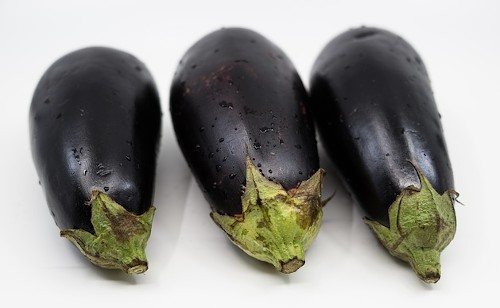
Black Moon
The variety owes its poetic name to the shape of the fruit - round and shortened pear-shaped. Under the dark purple glossy skin, which is classic for eggplants, there is hidden a light green pulp, which, even in dry summers, does not contain voids and is not bitter. Each vegetable weighs 250-350 g, and with only 1 sq. m you can get 4.5-5 kg.
Gardeners value the variety because in the greenhouse it is the most unpretentious eggplant, reliably bearing fruit on days 110-115 even with infertile soil and significant daily temperature fluctuations. But it also has its own characteristic care features:
- It is recommended to tie the branches of the bush so that they do not break off under the weight of the fruit;
- The black moon responds well to pinching the top - by accelerating the ripening of fruits and their larger size.
It is also worth mentioning the high immunity of the variety to tobacco mosaic.
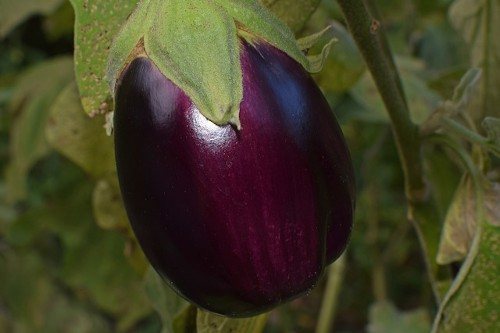
Sophia
It takes 135-150 days to ripen, but it's worth it - the weight of pear-shaped, almost black fruits reaches 700-950 g, inside them is dense, juicy pulp, the seeds of which do not become coarse for a long time (while the eggplant hangs on the bush).
In greenhouse conditions, semi-spreading eggplants are placed tightly - up to 6 plants per 1 sq. m, capable of ultimately yielding 7-8 kg of harvest.
The variety is distinguished by a sensitive root system, so the seedlings are transplanted to the greenhouse when they acquire 9 true leaves. In addition, it is important to take into account the following nuances:
- For the rapid development of Sofia, fertilizers are added to the greenhouse soil 3 weeks before planting the seedlings - 3 kg of humus and 50 g of superphosphate per 1 sq. m;
- After watering, always ventilate the greenhouse - in conditions of high humidity, the variety is susceptible to rot.
It is also useful to know that this eggplant is prone to excessive growth of green mass.
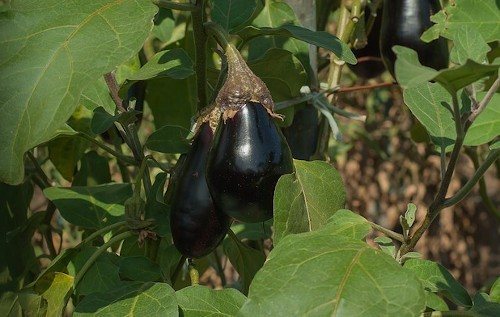
Varieties for open ground
For any of these varieties, it is advisable to allocate a sunny place in the garden, sheltered from strong gusts of wind.
Drakosha
This variety has many advantages due to many years of thoughtful selection:
cold resistance - does not require shelter even in the north of the middle zone;
- does not need to be formed;
- the fruits are universal - they are canned, dishes are prepared from fresh;
- the pulp is not fibrous, sweetish.
The weight of the fruits varies - 200-600 g, but the yield from 1 sq. m is stable - in 100-120 days you can collect 5-6 kg. If you are haunted by records, you can achieve 8-10 kg by planting the Drakosha not in open ground in June, but first in a temporary greenhouse in May, which is removed after 4-6 weeks.
Bushes 80-110 cm high can easily withstand the weight of the harvest, that is, they do not need to be tied up.So that Drakosha does not waste his energy in vain, it is recommended to inspect the formed ovaries and remove those that are curved, wrinkled, underdeveloped.
This eggplant is invulnerable to the mosaic virus, and the likelihood of being affected by gray rot or late blight is simply extremely low.
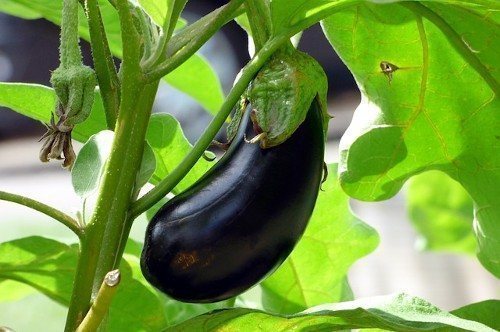
Robin Hood
Having chosen this variety, eggplants can be picked in just 90 days and, although the growth of the bush is small - 70-90 cm, each fruit grows up to 20 cm in length and weighs up to 300 g. Productivity - 7.5-10 kg per 1 sq. m. Beneath the thin, inky-purple skin is seedless, tender pulp.
Since Robin Hood has few branches, but many ovaries, the plant needs to be tied to supports. He also has some other features of agricultural technology:
- seeds for seedlings must be 2 years old;
- the variety is planted in open ground when there is no threat of night frosts, ideally from June 1 to June 10;
- Robin Hood needs light, “breathable” soil, so it is recommended to mix river sand into the beds.
In addition, as soon as the bush reaches 25 cm in height in open ground, its growth point should be removed to activate the development of side shoots. And you can leave only 6 stepchildren - the most selected and strong ones.
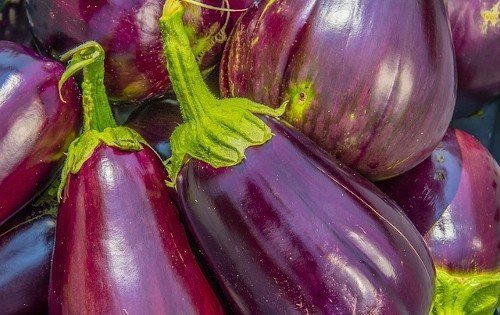
Striped flight
Many gardeners are attracted to vegetables of unusual color, and this eggplant is “dressed up” in purple skin with white, careless, subtle strokes. The taste can be highly appreciated. Fruit weight is 190-200 g. The harvest ripens in 120-140 days in the amount of 4.5-5.5 kg per 1 sq. m.
Among the features of cultivation in open ground, the following can be distinguished:
- landing is carried out according to the 40x60 pattern;
- fruit set is high, but with insufficient watering, the variety quickly fades and the fruits become twice as small;
- preventive protection against leaf-eating pests is necessary.
The Striped Flight has one more advantage - this eggplant is not afraid of hot weather.
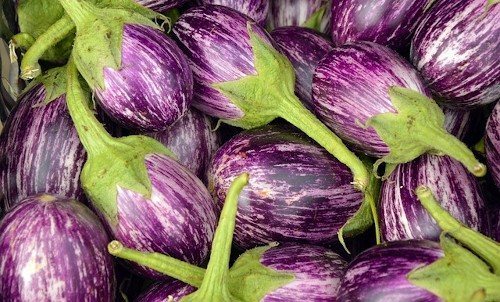
Giselle F1
The hybrid variety has gained wide popularity not only due to its excellent taste and shelf life (up to 4 weeks in a cool place), but also due to its high adaptability. The harvest ripens in 105-115 days in the amount of 7-9 kg per 1 sq. m.
Giselle's vegetation cycle proceeds well in the arid, hot conditions and extreme weather conditions of the northern regions. But it is important to take into account the features of growing the variety:
- It is recommended to prefer the seedling method for sowing seeds in open ground;
- 2-3 weeks before transferring to the garden, the seedlings must be hardened off;
- plants are ready for this event when they form 6-7 true leaves;
- the variety is prone to root rot when overwatered against the background of low air temperatures;
- To prevent the formation of new ovaries from being inhibited, the ripening crop is harvested every 5-7 days.
It is also worth considering that per 1 sq. It is advisable to place no more than 4-5 bushes.
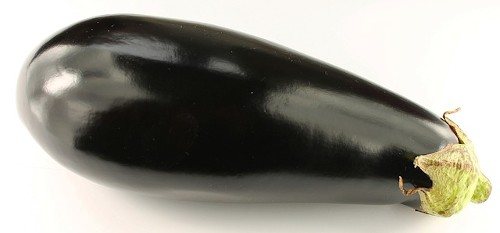
To summarize, it is useful to note that for eggplants grown anywhere, pumpkins, cabbage, zucchini, carrots, and legumes are considered good predecessors. And you can’t plant them after potatoes, vegetable peppers, and tomatoes.



